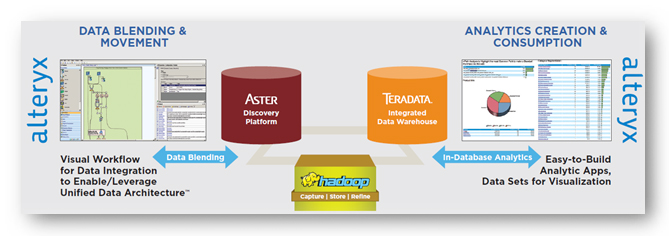As people step into Big Data, they know that one of the keys to getting the whole picture is having content from as many relevant sources as possible. These relevant sources mean a combination of structured, semi-structured, and unstructured information. The sources can include structured application databases such as Salesforce.com, semi-structured content like XML, or unstructured social media data from sources like Twitter.
To quote Bill Franks of Teradata, from his book ‘Taming the Big Data Tidal Wave:’
“The biggest value in big data can be driven by combining big data with other corporate data. By putting what is found in big data into a larger context, the quantity and quality of insights will increase exponentially. This is why big data needs to be folded into an overall data strategy as opposed to having a stand-alone big data strategy.”
But after gathering all this information from disparate sources, you need a place to put it so you can work with it. Teradata Unified Data Architecture (UDA) provides the platform for business insight, providing a place to store, query and analyze data. Teradata UDA is IT-friendly while providing easy tools for analysts and business users to leverage powerful data engines.
Alteryx enables even more users to leverage the big engines of Teradata. Alteryx Humanizes Big Data by enabling business users to create workflows that combine relevant sources, bringing new and ad hoc data into Teradata UDA. They can then create analytical workflows that leverage the underlying power of UDA for optimal processing.

You can learn more about how you can use Alteryx to further leverage Teradata UDA in a whitepaper we have just released: ‘Unleashing the Value of The Teradata Unified Data Architecture with Alteryx.’ This whitepaper, created jointly by Teradata and Alteryx, describes how organizations can leverage Alteryx and Teradata together to provide an optimal environment for analytics, which is accessible by business users.
 |
You can see a demonstration of Alteryx at the Teradata Big Analytics Roadshow. These events will directly address the pain organizations are feeling today, from Big Data architecture to performing advanced marketing analytics. Alteryx and Teradata will show organizations how they can remove their pain and evolve into a world of insight. Find a city near you and sign up!
The Teradata Big Analytics Roadshow:
|
Brian Dirking

Director of Product Marketing.


